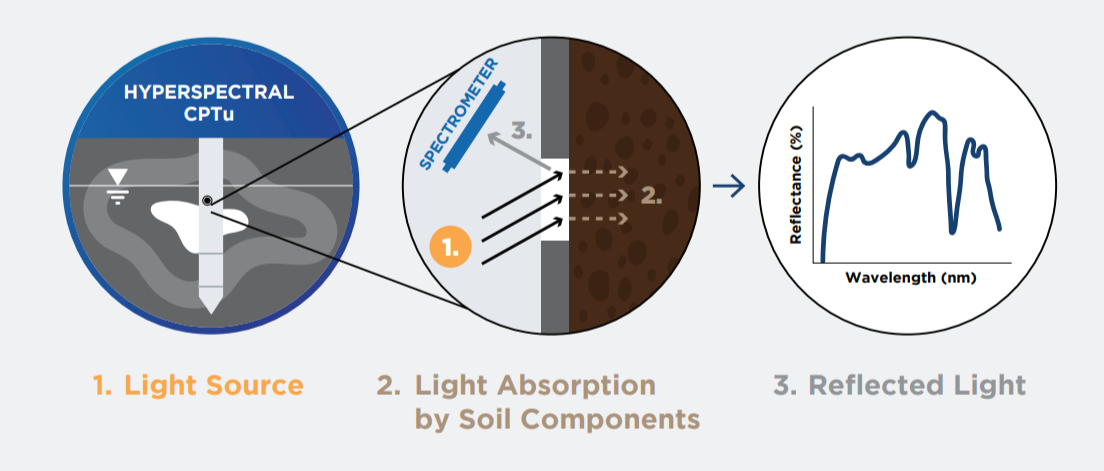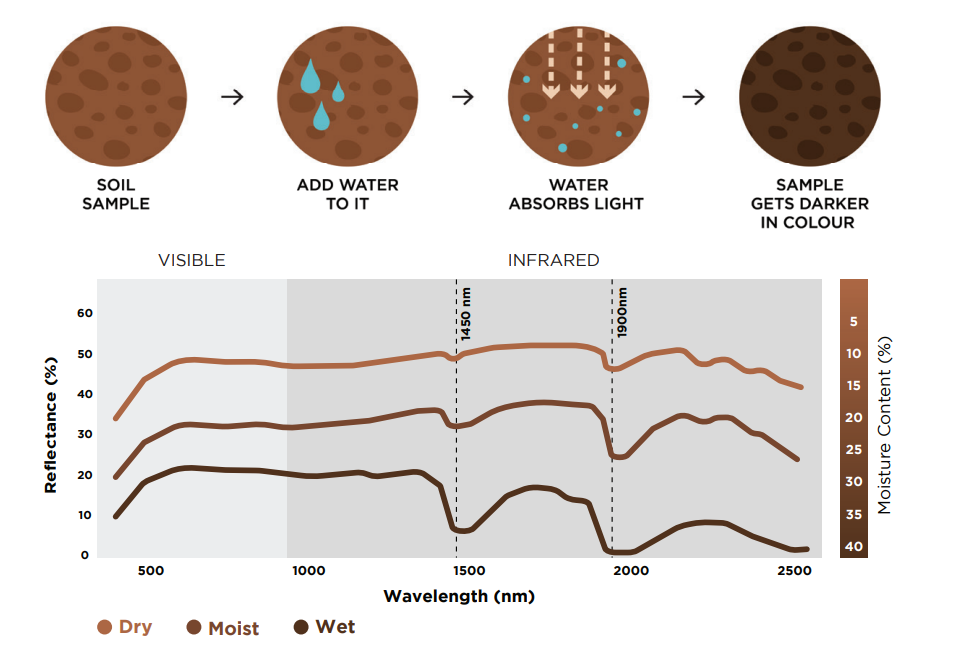OVERVIEW
The patent pending Hyperspectral Cone Penetration Test (Hyperspectral-CPTu™) is an in-situ soil characterization method that combines traditional CPTu with real-time hyperspectral reflectance sensing to rapidly assess soil properties like moisture, mineralogy, and particle size.
Laboratory soil testing provides detailed analysis but is costly, slow, and logistically complex—requiring drilling, sampling, and transportation, and highlights the need for faster, more efficient alternatives. In-situ Hyperspectral CPTu offers a promising solution to address these challenges:
ADVANTAGES
- Reduces cost, time, and environmental impact associated with sampling and lab testing.
- Enables predicted soils and tailings properties to be paired directly with CPT data.
potential
By measuring reflected light across different wavelengths, hyperspectral sensors collect information about water content and mineral composition. This versatile method serves dual purposes, enabling both qualitative and quantitative assessments of various materials and substances.
In geotechnical engineering, this method is particularly useful for:
- Supporting saturation profiling
- Estimating water content
- Estimating solids content
- Predicting percent of sand, silt, clay
- Supporting plasticity characterization
Why can water content be estimated using hyperspectral sensing?
Water content strongly affects soil reflectance, with notable absorption features near 1450 nm and 1900 nm due to water.
features
- Enables rapid, non-invasive, and high-resolution characterization of material properties in the field.
- The use of this technology is rapidly growing across geoengineering practice including core logging, resource mapping, and surface water management.
- ConeTec, among other researchers, have demonstrated the power of machine learning algorithms for the prediction of tailings constituents.













QUICK LINKS